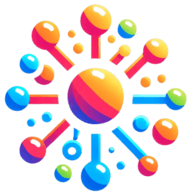8 Tools to Determine the Best Time to Post On Social Media
Unlock the secrets of social media timing with this expert-backed guide. Discover the power of analytics and AI to pinpoint the perfect moments for engagement. Dive into professional strategies that blend technology with real-world testing for social media success.
- Use Platform Analytics for Optimal Posting Times
- Analyze Audience Behavior with AI Insights
- Buffer Analyzes Audience Activity for Best Times
- Tailwind's SmartSchedule Optimizes Posting Times
- Instagram Insights Reveal Peak Engagement Times
- Combine AI Analysis with Real-World Testing
- Analyze Engagement Patterns from Past Content
- Analyze Audience Behavior and Track Performance
Use Platform Analytics for Optimal Posting Times
Determining the best time to post on social media to maximize reach and engagement requires a combination of data analysis, audience insights, and testing. One of the most effective ways to find optimal posting times is by using platform analytics. Most social media platforms, including TikTok, Instagram, and YouTube, provide insights into when your audience is most active. By regularly checking these analytics, businesses can identify peak engagement hours and adjust their posting schedule accordingly.
Another key strategy is A/B testing, where content is posted at different times throughout the week to track performance. By analyzing which posts get the most views, likes, shares, and comments, businesses can refine their strategy over time. Additionally, industry trends suggest that early mornings, lunch hours, and evenings are generally high-engagement periods, but audience behavior varies by niche.
Using social media scheduling tools such as Hootsuite, or TikTok's built-in scheduler helps maintain consistency and ensures posts go live at the most effective times. Another useful approach is monitoring competitor activity, as analyzing when similar brands post can provide insights into audience behavior.
Ultimately, the best posting time is unique to each brand and requires continuous testing and adaptation. By leveraging analytics, scheduling tools, and real-time engagement data, businesses can ensure their content reaches the right people at the right time, maximizing visibility and interaction.

Analyze Audience Behavior with AI Insights
Through building RecurPost, I've learned that the "best" time to post isn't universal-it's unique to each audience.
Early on, I relied on generic advice about peak hours, but real engagement came when I started analyzing my own audience's behavior. I use RecurPost's AI-driven insights to track when posts get the most traction, combined with Hootsuite for broader analytics. Instead of chasing trends, I let data guide me, constantly tweaking schedules based on real interactions rather than assumptions.

Buffer Analyzes Audience Activity for Best Times
Buffer is nDash's go-to social media management tool because it takes the guesswork out of when to post by analyzing audience activity and recommending the best times to share content. This isn't just a feature we dabble with—it's the backbone of how we ensure our social updates get seen. We use Buffer to schedule posts about our latest blog updates, ask thought-provoking questions to spark engagement, and periodically share freelance writing opportunities with our followers. For example, when we publish a blog post exploring tips for hiring freelance writers, Buffer helps us ensure that post gets in front of our LinkedIn audience when they're most likely to engage. Buffer's Optimal Timing Tool scans your audience's engagement patterns and suggests the best posting windows, helping your content hit at peak visibility times. One of my favorite uses of Buffer is during Freelance Writer's Appreciation Week every February. I love celebrating our freelance writing community and, because I can schedule posts in advance, I can share more. This tool also allows me to experiment with what types of posts work and which types I need to punt. For example, I learned that our audience prefers seeing explanatory posts with a link more than just a brief blurb with a link.

Tailwind's SmartSchedule Optimizes Posting Times
I rely on Tailwind to manage my social media scheduling and content calendar. A standout feature that saves me time is Tailwind's SmartSchedule, which analyzes past post performance and audience behavior to suggest the optimal times to publish content automatically. This eliminates the guesswork and ensures that my posts are scheduled for maximum engagement. Leveraging SmartSchedule, I can efficiently plan my entire week's content in one go, freeing up time. I know that my content will hit the audience at the most impactful moments.

Instagram Insights Reveal Peak Engagement Times
The ideal time to post can vary based on your unique audience. To truly pinpoint the best times for your specific account, dive into your insights right in the Instagram app. These analytics provide valuable data about when your followers are most active, giving you a clear picture of peak engagement times.

Combine AI Analysis with Real-World Testing
While general best-practice timing guides are useful starting points, we've found success by combining AI-powered timing analysis with real-world testing. Our platform analyzes historical engagement patterns across different time zones and audience segments, then continuously optimizes posting schedules based on performance data. One retail client saw a 45% increase in engagement simply by shifting their posting schedule to match their audience's actual active hours rather than following industry standards.
Analyze Engagement Patterns from Past Content
I determine the best time to post on social media by analyzing engagement patterns from past content rather than relying solely on generic 'best time' charts.
I use Meta Business Suite and Twitter/X Analytics to track when my audience is most active, then test different posting times to fine-tune my schedule. For example, I noticed my LinkedIn posts perform best early in the morning when professionals check their feeds before work, while Instagram engagement peaks in the evening.
One trick that works? Scheduling posts based on time zones of key audiences—especially for global reach. Data always beats guesswork, so I regularly adjust based on performance trends rather than sticking to a fixed schedule.

Analyze Audience Behavior and Track Performance
To maximize social media reach and engagement, analyze audience behavior by identifying demographics, time zones, and online habits. Conduct surveys to learn preferred engagement times and track past post performance to establish engagement patterns. Utilize analytics tools and understand platform-specific nuances for optimal posting times tailored to your audience's activity.



